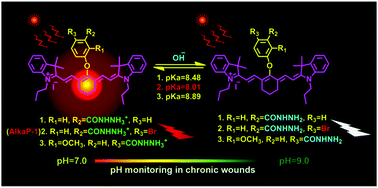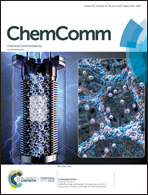A pH-sensitive near-infrared fluorescent probe with alkaline pKa for chronic wound monitoring in diabetic mice†
Abstract
A pH-sensitive near-infrared fluorescent probe with alkaline pKa, AlkaP-1, was developed by incorporating a benzoyl hydrazine group into a cyanine dye. The significant fluorescence changes in the alkaline regions enable the probe to monitor the alkalization process from acute wounds to chronic wounds in diabetic mice.



 Please wait while we load your content...
Please wait while we load your content...